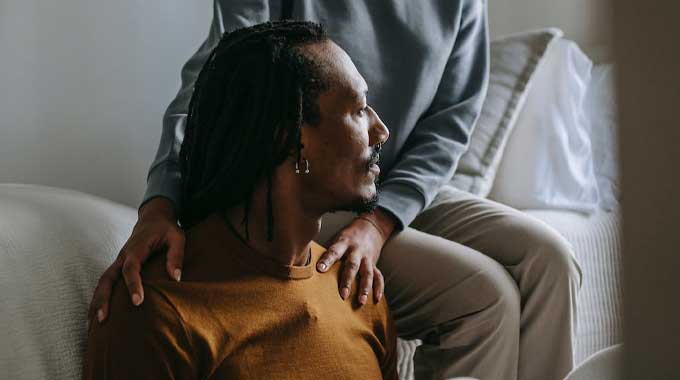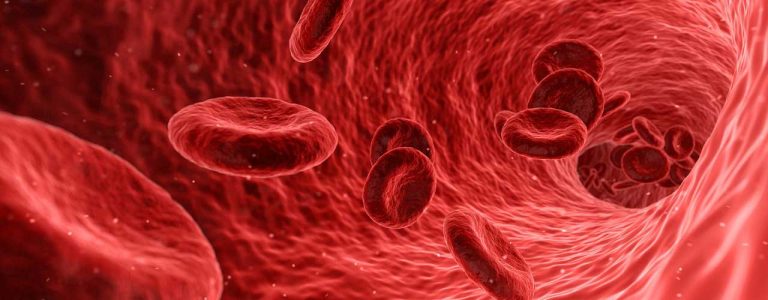This article will explain what Xanax is, explore the negative side effects of Xanax addiction, outline the withdrawal symptoms associated with quitting Xanax, and break down the symptoms of a Xanax overdose. In addition, it will provide information to people seeking addiction treatment for a Xanax addiction or any other form of substance abuse.
What Is Xanax?
Xanax (also known as alprazolam) is a form of prescription drug that is commonly prescribed to treat anxiety, panic attacks, depression symptoms, and panic disorders. It is a form of benzodiazepine that has a relaxing effect on the central nervous system (CNS).
Xanax works as a depressant on the CNS by increasing the inhibitory signal effects of the neurotransmitter (GABA). In short, this means that this neurotransmitter prevents messages between nerve cells and the brain and spinal cord. This in turn creates various effects including a reduction in stress, anxiety, and fear.
Get help: Orange County Rehabs
How Is Xanax Taken?
People taking Xanax will usually be instructed to take the drug in the amounts of 0.25mg to 0.5mg at least 3 times a day (with the absolute maximum amount for the day being 4 times) if they are using it to address anxiety.
If a user has a panic disorder, they will take higher doses of Xanax. Users are instructed to take 0.5gm at least 3 times a day (with the maximum dose in a day being 10mg). Older patients will typically receive smaller doses but will be expected to take the drugs with the same level of consistency.
What Are The Side Effects Of Xanax?
Xanax abuse can result in the user experiencing difficulties breathing, light-headedness, intense bursts of energy, an inability to sleep, drowsiness, dizziness, jaundice, agitation, double vision, hallucinations, seizures, central nervous system depression, a drug overdose, and even death in some cases.
Xanax Withdrawal Symptoms
The withdrawal symptoms for Xanax may include strange or unusual movements in the muscles, the user being more talkative or hyper than usual, significant changes in behavior and mood, intense confusion, hallucinations, seizures, and thoughts of suicide.
Can You Overdose On Xanax?
It is possible to overdose on Xanax, and there is a range of early warning signs and symptoms that may indicate that a benzodiazepine overdose is either about to occur or is occurring. The early and less severe Xanax overdose symptoms may include dry mouth, constipation, joint pains, tiredness, irregular talkativeness, an inability to have sex or an impaired sex drive, headaches, drowsiness, nausea, light-headedness, concentration difficulties, a higher amount of saliva produced in the mouth, and difficulties urinating.
The more severe symptoms may include yellow skin or eyes, mood swings or behavioral changes, loss of speech or an impaired ability to speak, coordination or balance issues, difficulty recalling or general memory problems, seizures, hallucinations, confusion, respiratory difficulties, respiratory depression, mental health symptoms such as severe depression, unresponsiveness, loss of consciousness, a coma, or death in extreme cases.
Polysubstance Abuse
Mixing Xanax with other drugs is extremely dangerous and increases the chances of a person experiencing a Xanax overdose. For instance, if a person combines too much Xanax with other drugs such as opioids, benzodiazepines, and alcohol, they will experience an inability to breathe and will begin to suffocate, and this of course can lead to a potentially fatal overdose on Xanax.
In addition, there is a range of other benzodiazepines that it is dangerous to mix Xanax with, and this includes certain forms of pain medications, ketoconazole, itraconazole, antihistamines, sedatives, and other drugs.
If a user takes too much Xanax and mixes the drug with alcohol, it can be incredibly dangerous due to the fact that the combination of both Xanax and alcohol causes the same effects on the central nervous system.
Especially, both of these drugs cause a depression effect, meaning that they may reduce the ability to breathe, and they can increase the likelihood of the user experiencing the side effects previously mentioned (such as motor and cognitive problems, concentration difficulties, drowsiness, a lapse in memory, respiratory depression, and even death).
What’s more, the combination of both these drugs being taken at the same time will lead to the user experiencing these symptoms on an intensified level, and this may also make it a lot harder for the medical professionals to reverse the effects of a drug overdose, meaning that the risk of death as a result of the overdose is much higher and more likely.
What To Do in The Event Of a Xanax Overdose
The best immediate course of action to address a Xanax overdose is to call 9-1-1 and request emergency medical attention. Moreover, it is recommended that the person’s breathing is monitored, and if there are any items (such as a necklace) restricting the breathing of the individual, it’s best to remove this item carefully. In addition, if the Xanax user stops breathing, it is recommended to perform CPR (mouth-to-mouth resuscitation) until medical help arrives.
How Is a Xanax Overdose Treated?
Medical professionals will typically treat Xanax overdoses or other forms of benzodiazepine abuse that have led to an overdose with varying forms of treatment, and the care given will be entirely dependent on how the condition of the patient, in terms of their weight, age, drug misuse, and overall health.
When an overdose occurs, the patient may have their stomach pumped in order to remove the benzodiazepines from their system, after which they will be monitored continuously, being provided fluids and drugs they might need to keep their condition stable. Moreover, if the patient is suffering from respiratory problems, they might be fitted with a breathing tube.
Intravenous fluids will usually be given to people suffering from an overdose in order to help to return the patient’s hydration levels back to normal, stabilize their blood sugar levels, and return them back to a stable condition, where they are less likely to experience seizures or a heart attack.
Doctors may also opt to give the patient a flumazenil injection. This particular drug seeks to reverse the effects of benzodiazepine toxicity by blocking the benzodiazepine receptors within the brain.
When the patient has been properly stabilized and is ready to leave the hospital or medical facility, they can then move on to addiction treatment options such as detoxification, rehab, therapy, and other forms of care.
Xanax Addiction Treatment
Detoxification
For people suffering from Xanax addiction, or other substances, there are several options available in terms of substance abuse treatment that can help them on the road to recovery. Patients should first decide on whether they wish to go for a medical detoxification process (with the aid of prescription drugs) or non-medical detoxification (essentially going ‘cold turkey’ and being monitored throughout by a clinical professional), and where they would like to undergo this treatment process.
The detox will enable the Xanax user to cleanse their body and remove any remaining traces of Xanax from their system. Thereafter, patients can check themselves in a center such as Cornerstone Socal which can offer inpatient treatment options and outpatient treatment options for substance abuse treatment, according to what is covered by their health insurance provider.
Rehab
Inpatient treatment facilities will typically involve the patient residing in a residential treatment center for the duration of their treatment. For instance, some individuals might decide to undergo the detox process and then proceed to receive treatment within a residential treatment center (rehab). Here is where they can temporarily reside at the medical facility and receive 24/7 medical attention and supervision, gain access to prescription medication when they need it, and gain access to other resources that will help them with their recovery.
These services are also available as outpatient treatment options, but this will mean that the patient does not reside at a medical facility during their treatment, and may visit a particular professional treatment provider several times a week to receive their treatment.
Therapy & Programs
After the physical dependence part of the addiction process has been overcome, the patient may move on to addressing the physiological dependence on Xanax use. Patients can take advantage of 12-step programs and 4-step programs, as well as counseling and therapy treatment options that can help them to build the coping mechanisms and confidence they need to beat their addiction and take back control of their lives.
If you’re seeking addiction treatment, click here to learn about how Cornerstone Socal can help.






